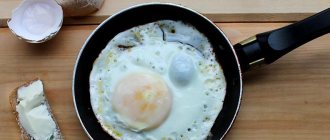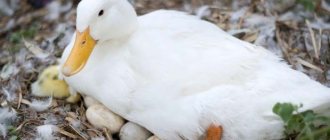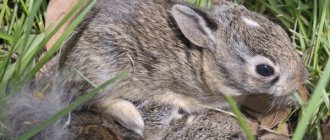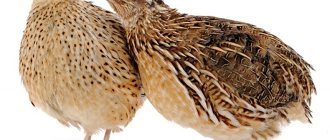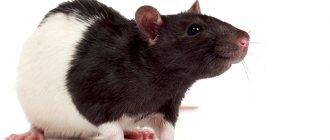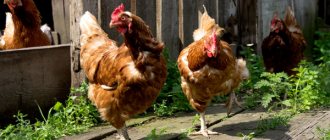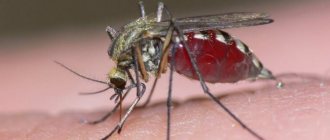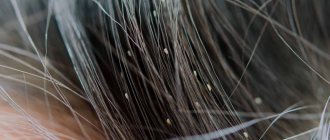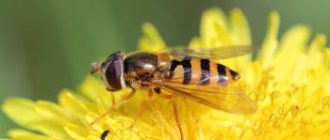Despite their miniature size, laying quails of egg-laying breeds demonstrate high average annual yields of egg production. The egg production of quails at home directly depends on compliance with the rules for their maintenance. The productivity of birds is affected by changes in ambient temperature, changes in feeding regime, lighting in the room and many other factors that you need to know about.
When do quails start laying eggs, at what age?
The main advantage of quails is their early puberty. The instinct to mate in quails appears at 5 weeks of age. Males announce their readiness for mating by shouting, females by quiet whistling.
The main advantage of quails is their early puberty
Depending on the breed, quails begin laying eggs at the age of 5-6 weeks. In the first month, one hen brings no more than 10 eggs, in the next month - about 25 eggs per month.
Birds fly during the day or in the evening, after feeding. One quail lays 1 egg daily for 5-6 days. Then the hen rests for 1-2 days and begins laying eggs again.
Such breaks are considered the norm. For longer stops, the cause of the decline should be determined.
The value of a dietary product: the benefits of quail eggs
Nutrient content
The main reasons why quail breeding is gaining increasing popularity are dietary poultry meat and the nutritional value of eggs.
Quail eggs are valued for their beneficial and tasteful properties, and no expense is spared when purchasing an expensive product. 1 quail egg contains:
- amino acids: lysozyme, glycine, histidine, folic, nicotinic, aspartic acid, tyrosine;
- trace elements: calcium, phosphorus, cobalt, zinc, iron, chromium, copper, potassium, sodium;
- nutrients: fats, protein;
- vitamin groups: A, B, E.
Energy value of quail eggs: 159 calories per 100 grams.
The beneficial effects of eggs on the human body
Due to their rich composition, quail eggs benefit children, pregnant and lactating women, and men suffering from sexual dysfunction.
The product helps strengthen the immune system, so it is recommended in diets during illness and for prevention purposes.
Containing large amounts of calcium and potassium, eggs are used for fractures, diseases of the joints, musculoskeletal system, and during the period of active growth of children. They are rich in nutritional composition, which has a beneficial effect on the health of patients:
- diabetes mellitus;
- anemia;
- gastritis;
- stomach ulcer;
- tuberculosis;
- bronchitis;
- pneumonia;
- obesity;
- cholecystitis.
Who should use it with caution and in what cases?
Quail eggs in limited quantities should be eaten by people with gallbladder diseases, severe liver damage, patients with diabetes, obesity, and allergies.
The common belief that quail eggs are not contaminated with salmonella is a myth. Like chicken ones, they need to be disinfected to prevent infection. Before use, wash thoroughly with warm water and soap and boil for 10 minutes.
The beginning of egg laying in different breeds
Birds lay eggs during the day or in the evening, after feeding.
According to their intended purpose, domestic quails are divided into two types: egg-laying quails with high egg production and meat-egg quails with an average or low level of egg production.
When egg-laying quails begin to lay eggs:
- Japanese quails . Oviposition occurs at the age of 1.5-2 months, the egg production rate is 300 pcs. per year, egg weight 9-11 g.
- Estonian and English white quail . Birds begin to lay eggs at the age of 5 weeks, the egg production level is 280 pcs. per year, egg weight 10-11 g.
Breeds of quail for meat and egg production:
- Pharaoh . Females begin laying eggs at 6-7 weeks of age. Quails have an average egg production of 200 eggs per year. The eggs are large, weight 15 g.
- Texas beef quail . Egg production begins at the age of 2 months. Egg production 220 pcs. per year, egg weight 16 g.
Be sure to read:
Do-it-yourself quail cage: step-by-step instructions, types, arrangement
How are quail eggs different from chicken eggs?
Everyone has heard about the benefits of quail eggs. A comparative analysis is given in Table 3. The indicator values are given for one egg.
Table 3
| Index | Quantity in one egg, g | |
| quail | chicken | |
| weight | 7-13 | 48-56 |
| protein | 13 | 12 |
| fats | 11 | 11,5 |
| carbohydrates | 0,5 | 0,7 |
Quail eggs are superior to chicken eggs in the amount of minerals. They also contain twice as many vitamins.
Why do quail stop laying eggs?
Reasons why quails do not lay eggs:
- Incorrect lighting conditions. The duration of daylight during the egg-laying period should be 17 hours a day. Lighting is dim 40-50 kW. In bright light, quail become aggressive and can peck each other.
- Temperature too low or high . The optimal temperature in the poultry house is +18…+22 degrees. A drop in temperature of up to +3 degrees is allowed in winter. At low temperatures, quails huddle together, and there is a risk of illness and death of the bird. At temperatures above 26 degrees, birds lose their appetite, become lethargic and unproductive.
- Transportation. When moving to a new place or transferring from one cage to another, laying hens become stressed and stop laying eggs. After 2-3 weeks, the birds get used to their new housing and restore egg production.
- Shedding. During the period of seasonal molting, the body spends considerable energy on restoring the feather cover; quails completely stop laying eggs.
- Diseases. The cause of illness in quails can be contaminated feed, contaminated water, and non-compliance with care regimens.
- Overpopulation of cells. In cramped cages, birds become aggressive and irritable.
Ways to increase egg production
Many factors can affect egg production. And if quails stop laying eggs, it can be difficult to establish the reason in some cases. But even if it has not decreased, not a single poultry farmer will object to its increase.
First, the bird must receive sufficiently balanced feed, which must contain in the required proportions:
- flour (fish and meat and bone) it contains such important elements as proteins and amino acids;
- gravel and shell contain minerals that make the shell thicker and stronger.
In addition, stick to the feeding time that is usual for the bird. Adult quails need to be fed three times a day. The norm is thirty grams of feed per head per day.
It is advisable that the feeders be empty between feedings. This is necessary so that the bird eats with great appetite. Overfeeding is just as dangerous as underfeeding. If a laying hen eats more than normal, she may become fat, which will negatively affect egg production.
Second, constantly monitor external factors that may affect the bird’s well-being.
If you follow all these rules, then your charges will lay eggs well, delighting you with tasty and healthy eggs.
Valuable dietary product
Reasons for decreased egg production
In cramped cages, birds become aggressive and irritable.
The main reasons for decreased egg production are often associated with improper keeping of birds:
- Wrong diet. Quails have a high metabolism. The standard amount of feed consumption is 35-40 g per day per 1 individual. Food starvation and obesity significantly reduce egg production.
- Reducing the duration of lighting to less than 17 hours a day . When there is insufficient lighting, birds sleep a lot and eat poorly.
- Temperature deviations from the norm within acceptable limits (+3...+18, +22...+26 degrees) reduce poultry productivity by 20-60%.
- Lack of ventilation in the room. The presence of drafts causes a decline in productivity, feather loss and illness in birds.
- Low or high air humidity. It should be 60-75%. Low humidity leads to colds and respiratory diseases. Increased levels contribute to oppression of the bird and, as a consequence, its death.
- Aging of the laying hen. At the age of 10 months, the female’s egg production decreases; by the age of 2 years, quails lay few eggs or do not lay them at all. Old females have a longer break from laying eggs in winter.
- Change of male of the pack, introduction of new individuals. Females become strongly attached to one male and, when replacing them, do not allow young sires to approach them. After 2 weeks, young quails restore egg production.
Be sure to read:
Keeping quails: from choosing a breed, incubation to slaughter and sale at home
Demand for products
Quail eggs are less likely than chicken eggs to cause allergic reactions, and their composition is a valuable source of essential vitamins and minerals.
People who have allergic reactions to chicken egg whites may experience a similar reaction when consuming quail eggs.
Comparative nutritional characteristics of quail and chicken eggs are presented in the table:
| Options | Quail egg | Egg |
| Dry matter,% | 25,4 | 22,4 |
| Proteins | 12,8 | 11,6 |
| Vitamins, mcg | ||
| A | 1180 | 780 |
| RR | 110 | 99 |
| IN 1 | 137 | 49 |
| AT 2 | 1100 | 500 |
| Minerals, mg | ||
| Phosphorus | 213 | 185 |
| Potassium | 620 | 124 |
| Iron | 404 | 88 |
| Calcium | 76 | 52 |
| Copper | 17 | 9,6 |
| Cobalt | 6,6 | 3,8 |
| Amino acids, g | ||
| Glutamic acid | 1,72 | 1,44 |
| Aspartic acid | 1,16 | 0,79 |
| Lysine | 1,05 | 0,75 |
| Methionine | 0,72 | 0,38 |
| Cystine | 0,43 | 0,28 |
| Tryptophan | 0,24 | 0,2 |
The weight of a chicken egg is approximately 4.5-5 times more than a quail egg, and to get more useful microelements you need to eat an equal amount of the product, that is, at least 4 quail eggs.
A balanced diet rich in beneficial microelements for birds is one of the most important factors influencing the quality of egg products.
Quails occupy a small space, do not require much feed and produce large volumes of egg production. You can create favorable conditions for their growth and reproduction even on the loggia of an apartment building.
The egg production of quails at home will be no less high than on specialized poultry farms, if you are interested in the experience of successful farmers, as well as regularly obtain and apply skills and knowledge that will improve the productivity of birds.
How to quickly increase egg production
Basic requirements for the conditions of keeping quails:
- Lighting . The maximum egg production of laying hens is achieved with 20 hours of illumination and a light mode: 18 hours light - 2 hours dark - 2 hours light - 2 hours dark.
- Balanced diet . In summer, the bird's diet includes: crushed grain, fish or bone meal, meal, grated vegetables, green food (nettle, dandelion, clover), insects and worms. In winter - more boiled root vegetables.
- Cleanliness in the cells, creation of comfortable conditions . No sharp sounds that frighten the feathered bird.
Advice! The best nutrition option for laying hens during the productive period is factory feed PK-1.
Vitamins to improve egg production:
- A – the testicles will be large with a bright yellow yolk;
- D – improves shell strength, reduces the risk of rickets in chicks;
- E – increases testicular fertility;
- B vitamins – improve the physical condition of the bird.
Vitamins are added to poultry diets in the form of supplements or in food products.
Important! Combined vitamin supplements “VITVOD” and “VITTRI” are effective.
Mineral additives: crushed chalk, shell, eggshell.
Advice! Experienced farmers advise keeping males and females in the same cage or planting them for a long time. When kept separately, the egg production of laying hens decreases.
Growing conditions
If you have already decided why you need quail, eggs or meat, for your family or for income, then you can move on to organizing the conditions for keeping the poultry. There are several key points.
Room. To organize a quail farm of 100-300 birds, a room of 10 sq.m, where there are no drafts, but there is good ventilation, is suitable. Quail metabolism is accelerated, so the bird needs more fresh air. In the summer, if the weather permits, the cages can be left outside - provided that the area is closed and there are no cats (ferrets and other predators).
To ensure the flow of fresh air needed by birds at the rate of 2 cubic meters per 1 kg of quail in winter and 5 cubic meters. In summer, you can install air conditioning.
Remember that quail does not like sharp sounds - if possible, make sound insulation.
Cell. Quail is a very small bird. It is dangerous to let her out into the enclosure. It is optimal to keep chicks and adults in a cage. You can make your own sparrowhawk from a fine and strong metal mesh and a plywood sheet with a door on top. For each bird there must be a minimum of 200 sq. see, if it is a meat breed, then 10% more.
However, if the space allows, it is better to build a 30x30 cm cage for each quail family - usually 3-4 females and a leading male, an adult (there is no need for it if you plan to deal only with eggs). When designing, keep in mind that the height of the “ceiling” should not be less than 25 cm. Slope the floor of the cage so that the eggs roll into the container. Install a litter tray as well. Cover the ceiling with soft material - a flying quail may be harmed if the top of the house is metal. Alternatively, purchase ready-made cell batteries.
Light. Without light, quail, like chickens, will not eat, gain weight or lay eggs. Long daylight hours, 18-20 hours, guarantee high productivity of birds. You shouldn't abuse this.
Do not keep the light on 24 hours a day - otherwise, males become nervous first, females a little later. Fights begin, the egg production of quails drops, and the appetite worsens. In large poultry farms, where egg production is carried out on an industrial scale, daylight hours for the livestock last 18 hours, after which darkness and light, each lasting 2 hours, alternate. The regime has a beneficial effect on poultry productivity.
Temperature. Quails are easy to grow in central Russia precisely because the bird cannot stand the heat. The air temperature should not exceed 18-200 C. For young animals - 2-3 degrees higher. In winter it is necessary to heat the room where the cages are located, and in summer it is necessary to cool it, avoiding drafts.
If the temperature regime is not observed, then egg production drops, and the death of livestock is possible. To do this, you can choose a heating system and air conditioning. The optimal humidity level is 60-75%.
Feeding. If you are going to raise quails in a country house or country house where you are not present 7 days a week, then it makes sense to install a bunker-type feeder. So, in your absence, the bird will receive food. The most convenient drinking bowl is the nipple system. For hygiene purposes, it is better to install feeders outside the cage space. Birds should be fed 2-3 times during daylight hours at the same time. Violation of the regime is fraught with stress.
Diet. Quail nutrition usually consists of 60% grain crops. The rest is calcium (powder from a river shell), greens (grass, alfalfa, nettle), fish or meat and bone dust, sunflower cake. From time to time, root vegetables and boiled potatoes are added to the birds' diet. You can use purchased feed with added vitamins and minerals, depending on the breed of quail. Experienced farmers recommend a simple scheme: wheat - 30%, corn - 25%, ground shells - 5%, barley - 5% plus fishmeal additives and always greens.
Chicks have a different menu. For the first three days of life, young animals eat finely chopped, hard-boiled eggs. Next, the diet is replenished with cottage cheese and complex feed for chickens. Water for chicks should be boiled - for prevention, you can place a chloramphenicol tablet in the drinking bowl. From 8 days, the chicks are gradually transferred to the usual quail mixture.
Litter. Cover the floor of the cage with sawdust, hay and straw. It is recommended to change the bedding regularly so that the quails do not “fall on their feet.” Several times a week, place a container with a 2-3 cm layer of ash in the sparrowhawk so that the birds can clean their feathers. You can place the livestock in the ash box while you clean the cage. Purified river sand is also suitable for this purpose. But before throwing away the box of ash/sand, check the container for eggs.
How to choose the right chicks
Quail has a hard time with a change of residence - the bird is usually subject to stress, which negatively affects egg production. For an indefinite period, the bird stops laying eggs, even if the journey was short. For this reason, adult individuals are not sold for breeding - only if the owners are not conscientious.
You can find day-old quails in the incubator. Farmers who specialize in breeding birds offer week-old and sometimes 30-day-old chicks. If you already have experience caring for quails and all the necessary conditions for keeping them, then you can take very small, day-old birds. This way you will save on buying heads, and the mortality rate will be close to zero.
But if you do not have experience and the conditions are not the best, then it is better to take month-old quails that have already passed the most dangerous age. However, raised quail costs 5-6 times more. You decide.
Consider the “golden mean” option - week-old quail chicks. It is already clear what gender the individual is, the cost is average, you only need competent care to avoid disease and death of the birds.
The choice of chicks must be careful at any age. Inspect the quail; the eyes should be shiny and clear, the belly should be dry and clean, and the beak should be strong. A loud squeak also indicates good health of the individual.
Care and hygiene
Don’t forget about ash or river sand - for quails this is an opportunity to clean their feathers and get rid of parasites. Consult your veterinarian regarding vaccinations - specific vaccinations will be recommended depending on your area. Pay attention to the plumage - even slight baldness is considered a sign of a serious illness. Falling on your feet is another important reason to consult a specialist.
How to get fertilized eggs
To do this, place 1 male and one female in the cages - or one male and 4 females. These should be young individuals 2-8 months old.
At first, you can raise quails for your family, and when the process gets better, you may be able to organize a good business. The sales market can be found among neighbors, on online platforms, and on social networks.
Egg production: frequency and influencing factors
These birds tend to fly in the afternoon:
- after lunch;
- late in the evening.
An exception to this rule is the Japanese breed. Its representatives lay eggs immediately after eating food.
Another feature is the frequency of egg production. These birds lay one egg for five to six days. Then they need a break of one or two days. After this, the cycle repeats.
Egg production in these birds depends on two groups of factors:
- individual characteristics – age, breed;
- Features of keeping - habitat conditions, feeding.
Factors of the first group do not depend on the will of the owner. But any changes in the factors of the second group are directly reflected in productivity indicators. Knowing the patterns of such influence, the poultry farmer has a wide range of possibilities on how to increase the egg production of quails.
Physiological characteristics of poultry
Female quails are famous for their good egg production, but the number of eggs laid differs for each group of birds. The exact values depend on the breed, but the average data looks like this:
- Laying hens lay about 300 eggs per year. The average weight of each of them is 15 g.
- Laying hens of the meat-egg breed lay eggs of similar sizes. However, about 200 pieces are received from them per year.
- Females of the meat or broiler type are also capable of laying eggs, they are just rarely used for this. The main purpose of keeping such quails is to obtain dietary meat. If females are left to lay eggs, they produce up to 180 eggs per year, but they are large, weighing about 19 g.
Quails are considered a precocious bird with rapid growth. At three weeks of age, young animals are easily distinguished by gender. The bird develops adult plumage and reproductive organs are formed.
During this period, it is important to start distributing the young animals into groups to form a herd. Quails are divided according to productivity. The best individuals are left for reproduction. To get a 100% guarantee of mating, 4 females are allocated for 1 male. All remaining individuals in the herd are divided by gender. The females are left to receive eggs, and the males are placed in separate cages, fattened, and used for meat.
Texas quail pullets
Feeding
The basis of the quail diet is crushed grain, which accounts for exactly half of the menu. Add to it:
- vegetables and fruits;
- fresh grass – a source of vitamins;
- fish or meat flour, cottage cheese and other sources of animal protein;
- other components necessary to maintain the health and egg production of birds.
If possible, it is better to feed ready-made diets that can be purchased at pet stores. In addition to basic nutrients, they contain vitamin and mineral premixes that increase egg productivity.
